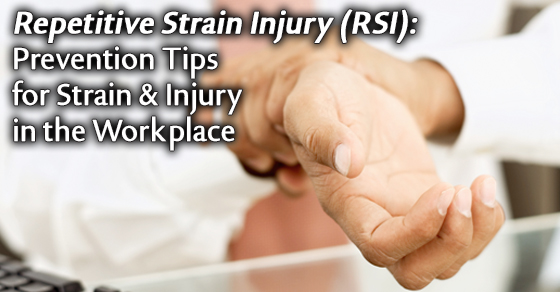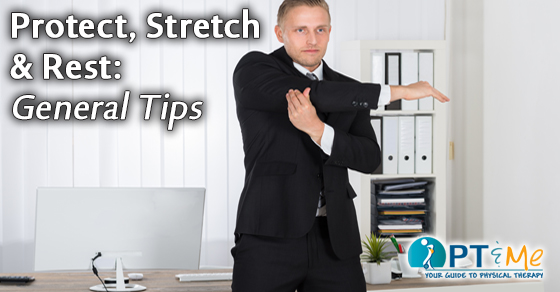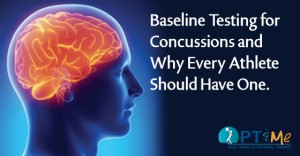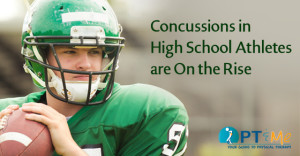The Following are Seen as Causes of Repetitive Strain Injury:
- The overuse of muscles in our hands, wrists, arms, shoulders, neck and back
- The area is affected by repeated actions, which are usually performed on a daily basis over a long period
- The repetitive actions are done in a cold place
- Forceful movements are involved
- Workstations are poorly organized
- Equipment is badly designed
- The individual commonly adopts an awkward posture
- There are not enough rest breaks
Prevention 101: Nine Easy Ways to Reduce Your Risk of Developing Repetitive Strain Injury:
- TAKE BREAKS when using your computer. Every hour or so, get up and walk around, get a drink of water, stretch whatever muscles are tight, and look out the window at a far off object (to rest your eyes).
- Use good posture. If you can’t hold good posture, it probably means it’s time for you to take a break from typing. If you are perpetually struggling to maintain good posture, you probably need to adjust your workstation or chair, or develop some of the support muscles necessary for good posture.
- Use an ergonomically-optimized workstation to reduce strain on your body.
- Exercise regularly. Include strengthening, stretching, and aerobic exercises. Yoga and pilates may also be helpful.
- Only use the computer as much as you have to. Don’t email people when you could walk down the hall or pick up the phone and talk to them. It’s not only better for your hands – it’s friendlier. Think before you type to avoid unnecessary editing.
- Don’t stretch for the hard-to-reach keys, e.g. BACKSPACE, ENTER, SHIFT, and CONTROL… basically everything but the letters. Instead, move your entire hand so that you may press the desired key with ease. This is crucial when you are programming or typing something where non-letter keys are used extensively.
- Let your hands float above the keyboard when you type, and move your entire arm when moving your mouse or typing hard-to-reach keys, keeping the wrist joint straight at all times. This lets the big muscles in your arm, shoulder, and back do most of the work, instead of the smaller, weaker, and more vulnerable muscles in your hand and wrist. If you find it difficult to do this, then your shoulder and back muscles are probably too weak. It is OK, and in fact a good idea, to rest your elbows/wrists when you are not typing.
- Use two hands to type combination key strokes, such as those involving the SHIFT and CONTROL keys.
- When writing, avoid gripping the writing utensil tightly. Someone should be able to easily pull the writing utensil out of your hand when you are writing. If your pen or pencil requires you to press too hard, get a new one (my favorite is Dr. Grip Gel Ink).
Article provided by Fit2WRK. The information noted above is a summary of one of the components of Fit2WRK.









